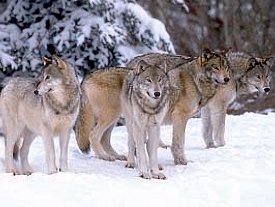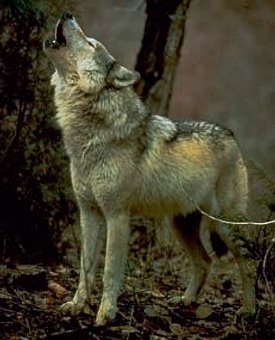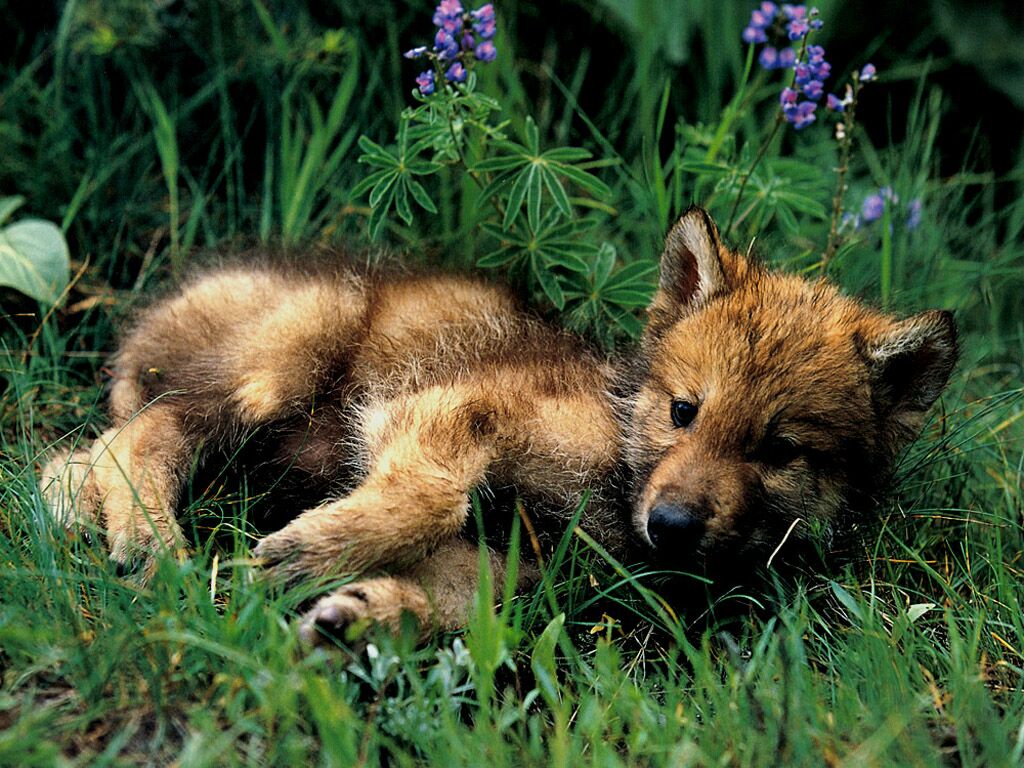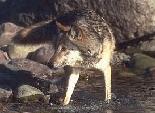|
The gray wolf (Canis lupus) also called the timber wolf is the largest of about 41
wild species within the dog family, Canidae, of the order Carnivora. They range in size from 26" to 38" shoulder height, 39"
to 80" in length (tip of nose to end of tail), and vary in weight from 57 to 130 pounds. Their coats may vary in color from
gray to brown, from white to jet black.

They usually hunt at night and feed primarily on large hoofed mammals such as deer,
caribou, elk, and moose, but sometimes eat berries, birds, beaver, fish, and insects. Animals that they kill are usually young,
old, or otherwise weaker members of their populations because they are easiest to capture. Most pursuits of prey range in
length from 110 yds to 3.1 miles. Healthy wolves rarely, if ever, attack humans. Their range once covered most of North America.
However, today only a few upper states and Canada have a wolf population large enough to maintain itself.

The gray wolf mates for life and lives in packs which can vary in size from 2 to over
15, but are usually from 4 to 7 wolves. There are many different roles in a pack. There will always be one Alpha male and
one Alpha female. These two lead the pack, lead the hunts, and are the only ones allowed to mate. Next rank is Beta, this
is almost like second in command. There is usually a beta male and beta female, possibly more. The beta male is usually brother
to the alpha male and will take his place if anything were to happen. Then there are the subordinate wolves who are basically
members that help with pup sitting, hunting, etc. Lastly there is the omega, also known as the lone wolf. This wolf will try
to stay away from the pack as much as possible, keeping his/her distance from social time. This wolf often dies because of
the lack of food and water it gets, but sometimes makes a recovery and moves up ranks within the pack. Wolf packs are formed
primarily of family members and relatives.
They may travel more often, and greater distances than any other terrestrial
animal. Their territories may cover from 100 to 260 sq. mi, depending on the abundance of food and water. Territories may
also overlap, although wolf

packs very seldom confront one another. Some wolves leave their packs to start their
own packs if a mate and a vacant area can be found.
Breeding season can vary from January in low latitudes to April
in high latitudes. A wolf pack will alternate between a stationary phase from spring through summer and a nomadic phase in
autumn and winter. The stationary phase involves caring for pups at a den or home site. During summer, most movements are
toward or away from the pups, and adults often travel and hunt alone. By autumn, pups are capable of traveling a little with
the adults, so until the next whelping season the pack usually roams as a unit throughout its territory in search of prey.
Though often only the highest ranking male and female in a pack will breed, unless needed to populate the pack with two litters.
All members of the pack are involved in raising the young, which includes babysitting them, playing, etc.
Mortality
factors affecting wolves include persecution by humans, killing by other wolves, diseases, parasites, starvation, and injuries
by prey. Most gray wolves probably live less than 10 years in the wild.
Gray wolves would defiantly have to be my
favorite because of how strong and beautiful they are and the way they live in packs. These wolves are truly amazing.
|

